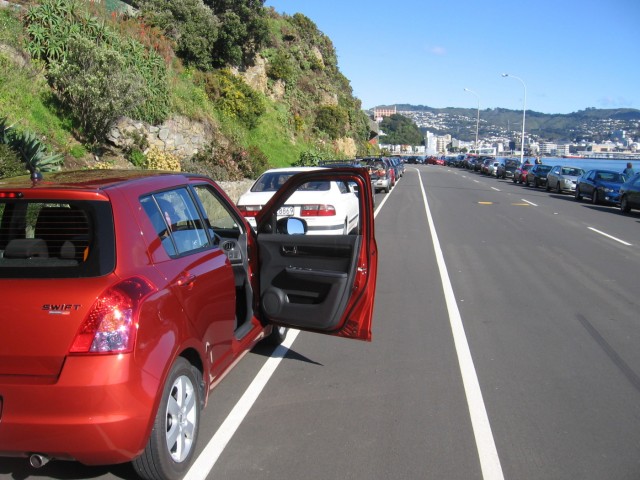01/06/2010, By KIRAN CHUG - The Dominion Post  Evans Bay Parade cycle lane
Evans Bay Parade cycle lane
More cyclists have been killed on Wellington's roads than in any other region in the last five years, yet cycling advocates say the city is falling behind other centres in making the roads safer for those at risk.
Figures from the Transport Ministry show the number of cyclists hit by cars and killed on New Zealand roads fluctuated between eight and 12 a year over the last five years, while 143 were seriously injured in 2009.
Cycling Advocates Network's Patrick Morgan said cycling infrastructure was stuck in the 1960s and motorists' attitude to cyclists was 30 years behind the rest of the world.
Wellington had a high proportion of cyclists but was well behind in programmes to improve infrastructure for cyclists.
Some changes were being made, with Wellington City Council due this month to make one of the city's busiest commuter routes safer for cyclists by making Thorndon Quay a clearway. The change would see parking spaces removed from the southbound traffic lane between 7am and 9am, creating a safer margin for cyclists.
However, Mr Morgan said more work was being done in other cities. In Nelson, a cycle-walkway through suburban reserves fed into the city, cycle training was council-funded, and a crash hotline collected data on injuries and blackspots.
Greater Wellington regional council supported a "Great Harbour Way", a continuous walking and cycle lane built from Pencarrow to Owhiro Bay, but funding had to be found.
Under the 2009-12 funding round, the National Land Transport Programme allocated $51 million to walking and cycling, and $3.1 billion for new or improved state highways.
Mr Morgan said while most transport funding went into roading, more focus needed to be put on building cycleways to encourage a healthy form of transport that was as safe as driving.
"We're at least 30 years behind the rest of the world."
He said that in the past three years, 320km of cycleways had been built in New York, while London was introducing 12"cycle super-highways". These were safe, direct routes from outer London to the central city, which were at least 1.5m wide with continuous cycle lanes with links to other cycle routes.
The focus in Wellington, by contrast, was on projects such as Transmission Gully and the Adelaide Rd flyover. "Councils' ideas of a cycling network is based around cyclists sharing bus lanes, which is going to do nothing to attract new cyclists or deal with safety concerns."
Auckland University School of Population Health head Alistair Woodward said New Zealand was going backwards in many aspects of cycle safety. "Over 20 years, the injury risk per hour of travel has been improving for every form of transport except one, and that is cycling."
http://www.stuff.co.nz/national/3760192/Wellington-falls-behind-in-cycli...
Caption: Oriental Bay bike lane. See the problem here?

